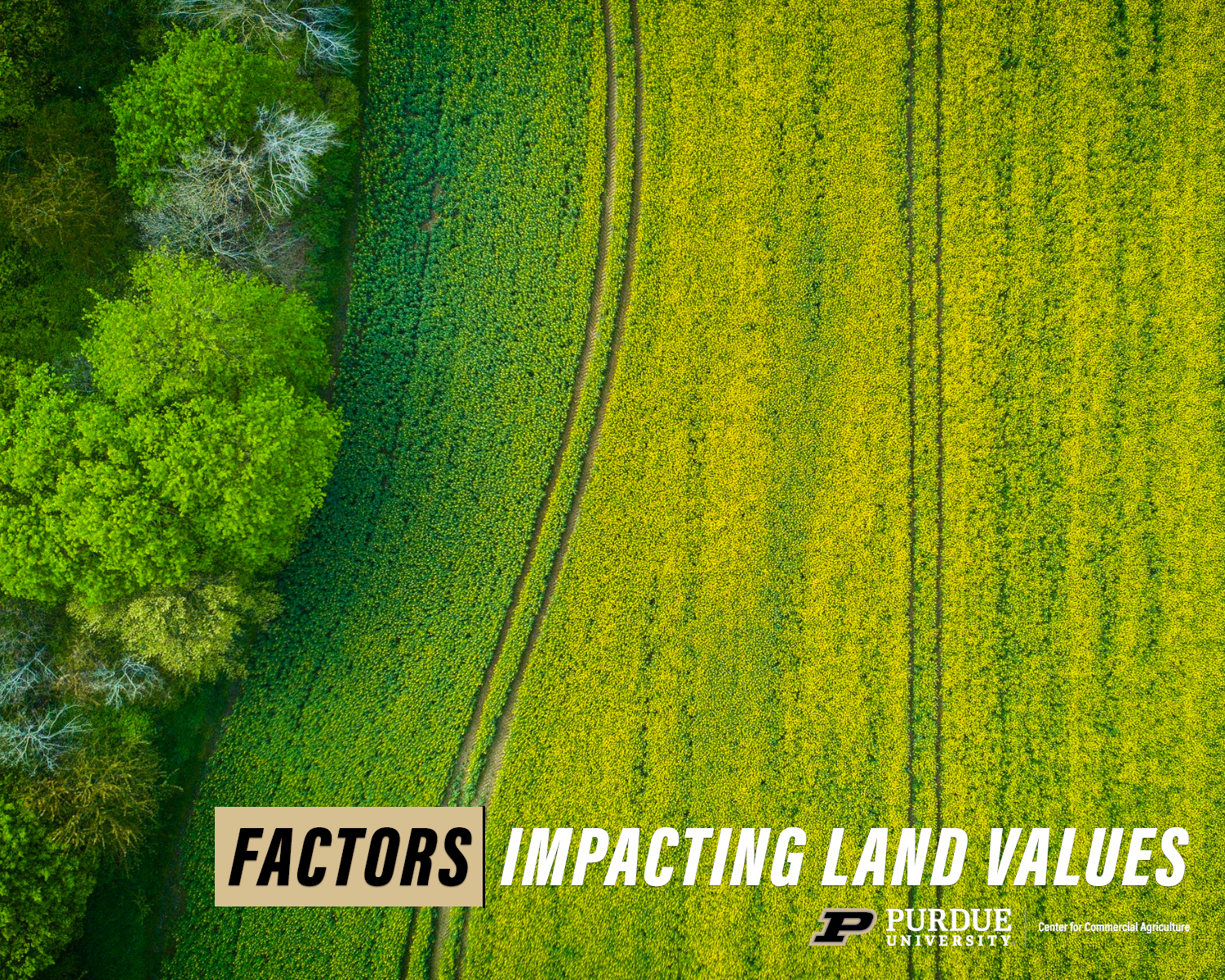June 12, 2020
Factors Impacting Land Values
by Michael Langemeier
There are several key factors driving potential changes in farm land values. These factors include cash rent, working capital, supply of land, interest rates, inflation, and investment potential of farmland compared to other investments such as the stock market, corporate bonds, or similar assets. Let’s take a look at these factors in two groups. The first group, cash rents and working capital, are creating downward pressure on land values. The second group, supply of land, interest rates, inflation, and investment potential represent positive influences.
Cash rent is primarily driven by net returns to land. Using a case farm in west central Indiana, net return to land has averaged approximately $237 per acre since 2007. During this time period, cash rent in west central Indiana for average productivity soil has averaged $229 per acre. Over the long-run, we would expect the average net return to land and cash rent to be similar. Since 2014, these two items have not been similar. From 2014 to 2019, net return to land and cash rent for the case farm averaged $185 and $256, respectively. In response to this divergence in values, cash rent declined approximately 17 percent from 2014 to 2019. Projected net return to land for 2020 is approximately $125 compared to a projected cash rent of $240 per acre, suggesting that further downward adjustments in cash rent may be needed.
Working capital is an important source of funds when making down payments on farm land. Working capital per acre for most farms has declined substantially since its recent peak in 2014. This decline in working capital has reduced farmers’ ability to purchase farm land. However, there are farms that still have solid working capital positions. Though working capital is used for other items such as to repay debt, and purchase machinery and buildings; farms with solid working capital ratios are in a good position to bid on farm land.
Now let’s turn to positive influences on farm land prices. The farm land market is often considered to be a very thin market, meaning that at any particular time the supply of farm land on the market represents a very small percent of total farm land. Anecdotal evidence indicates that this particularly true this year. Farm land is also considered to be a good hedge against inflation. Recent Federal Reserve policies in response to COVID-19 could potentially put upward pressure on inflation rates. Because of its low correlation to stock market returns, farm land is also attractive to institutional investors.
Long-term interest rates or capitalization rates are a major factor impacting land values. The capitalization rate depends on the long-term rate on U.S. treasuries (the risk-free interest rate), inflation, and the risk premium between the long-term interest rate for land and the long-term rate on U.S. treasuries. If any of these factors increase (decrease), the interest rate on farm land is likely to increase (decrease). Though inflation and the risk premium could increase, the long-term rate on U.S. treasuries remains at historical lows, subsequently providing support to farm land values. It is important note that one of the primary reasons for the large increase in land values from 2006 to 2014 was declining interest rates.
In summary, even though net return to land for farm operators and working capital are relatively low, there are other factors helping support current land values. In particular, historically low interest rates and limited supply of farm land may create a situation in which there is downward pressure on cash rents, but stable land values.

TAGS:
TEAM LINKS:
RELATED RESOURCES
UPCOMING EVENTS
We are taking a short break, but please plan to join us at one of our future programs that is a little farther in the future.




